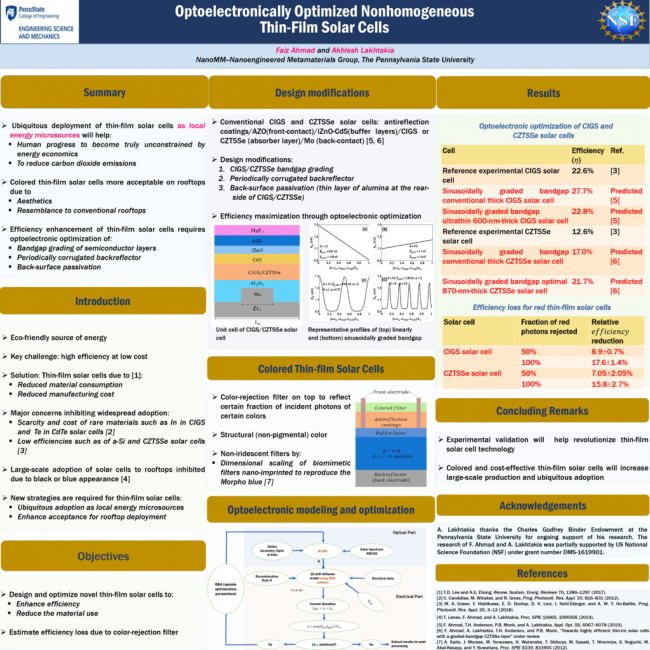Photovoltaic solar cells are an eco-friendly source of energy. The key challenge in photovoltaics is to deliver high conversion efficiency at low cost. Thin-film solar cells are a promising alternative to wafer-based crystalline silicon solar cells with significantly reduced material consumption and the promise of reduced manufacturing cost. However, there are a couple of major concerns inhibiting widespread adoption of thin-film solar cells: (i) scarcity and cost of rare materials such as indium in CIGS and tellurium in CdTe, (ii) low efficiencies such as of a-Si and CZTSSe solar cells. New strategies are required to overcome these concerns.
We investigated new thin-film solar-cell designs to incorporate optoelectronically optimized bandgap grading of semiconductor layers and periodically corrugated backreflectors along with the back-surface passivation. Our coupled optoelectronic optimization predicts that tailored bandgap grading can significantly improve efficiency, thereby promoting widespread adoption of thin-film solar cells as local energy sources as well as for multi-gigawatt sources incorporated in national and international energy grids.
Another hindrance with large-scale adoption of solar cells is their black or blue appearance that makes them aesthetically very different from traditional rooftops that either comprise burned-clay tiles or composite-material shingles. Rooftop solar cells may become more acceptable if they are colored, e.g., red. To overcome this problem, we studied the red colored solar cells for different thin-film materials with either homogeneous or nonhomogeneous. Our optoelectronic optimization predicts that efficiency gain by the bandgap grading, etc., is more than enough to swallow efficiency reduction by rejection of red photons.


